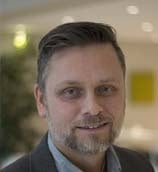My name is Mikael Börjesson and I lead the strategic developments within sustainability and public affairs across the Swegon Group. I will in this blog post share my findings and reflections from the Mostra Convegno Expocomfort (MCE) 2024 exhibition in Milan, perhaps one of the more important fairs in our industry.
First of all – it’s great to see that the exhibitions are finally back in full swing after the pandemic, with colleagues from the heating, ventilation and air conditioning (HVAC) industry eager to exchange ideas and get updated on new products and services. And new ideas are badly needed within the HVAC business. With European Union initiatives like the Green Deal, the Renovation Wave and Re-power EU, the HVAC business sees a number of tough regulations on the horizon. So you might expect a real sense of urgency to change. But looking at the shop-window that is MCE, how do we live up to expectations?
What is new?
For sure, things have changed since the last big MCE exhibition in 2018. The most apparent is of course the shift away from fossil fuel boilers, over to heat pumps, which are present at the exhibition in all shapes and sizes. This is testament to our ability within the industry to rapidly adapt to changing circumstances. But, is there such a drive for change in other areas as well?
What happened to indoor climate?
The pandemic put the spotlight on the importance of indoor climate, and thanks to this sudden burst of interest, we saw mainstream media covering not just virus related issues, but also the wider range of health issues related to insufficient indoor climate, as well as the effects of indoor climate on our productivity and well-being. This was, and still is, a major opportunity for our industry to really highlight the importance of a good indoor climate. It really strikes to the core of why our business exist, and what we can contribute with, if invested in. Judging from how the indoor climate aspects are largely absent from the communication at MCE, this is somewhat of a missed opportunity, where not much has changed since pre-pandemic times.
The energy savings blind-spot
From what is communicated in the exhibitor stands, many HVAC product suppliers are clearly concerned with how to minimise energy consumption, improving their products to reduce the amount of kilowatt hours spent. But how to connect, integrate and optimise the system as whole is still largely left up to controls specialists. It’s of course important to make sure all components of the HVAC system works as efficiently as possible, but as we can see from reliable data, such as the BACS standard, there is a huge energy-saving potential in the optimisation of the system as a whole, and there remains a lot to be done here. With the power of digitalisation, the producers of technical equipment – who really know the products best – should be able to help bridge this system gap further, making the optimisation easier, cheaper and more widely applied.
The increased awareness of embodied CO2
When talking about CO2-emissions, it’s in our DNA within the HVAC sector to focus on operational carbon, i.e. the energy used to drive our fans, pumps and other equipment. At the MCE, the upcoming restrictions imposed by the European Union on the use of refrigerants suddenly put the focus on CO2 in another way, highlighting the embodied carbon aspects. The switch from refrigerants with a high Global Warming Potential (GWP) towards alternatives, such as propane (R290) was very apparent in the exhibition halls. This is of course an important step in the direction of a more sustainable industry, but there is still much to be done. The challenge here will be to shift from our linear mindset of producing, using and scrapping, to increasingly applying a circular mindset, where the focus is on prolonging the product lifespan and even re-using products. The demand for these solutions is growing fast from investors and property owners, especially in the Nordics, but this topic is still largely invisible at the MCE.
So, where does it leave us?
An exhibition like the MCE is a great opportunity to get an up-to-date view on the recent developments in the industry, but it’s also a great place to reflect and get inspiration on where to go next. From my own perspective, looking at the exhibition through a filter of sustainability, there is clearly some positive developments, away from fossil fuels and high-GWP refrigerants. But what is striking is that these changes are largely reactive. I strongly believe there is a fantastic potential in driving change more actively. The RE:3 circularity concept we have developed at Swegon, is an example of the move towards circularity. The SMART Link+, which is a standardised solution for optimising the operation of heat pumps and air handling units, is a concrete example of a solution that drives system optimisation across traditional trade boundaries.
Going from linear to circular, and thinking in terms of systems rather than products, is admittedly a challenge. And it doesn’t just concern our products, for instance, we need to revise old standards and legislations that are written with a an outdated linear mindset. But it simply needs to be done if we are to live up to the targets set nationally and within the European Union – and in the end, of course, to combat global warming. We are happy to act as pioneers on this journey, but to reach the targets and achieve results, it will be crucial that the entire industry steps up to the challenge. We need to change the way we work, together!

























.jpg?width=75&name=Image%20(5).jpg)








.jpg?width=75&name=magnus%20andersson_550x550%20(1).jpg)











.jpg?width=75&name=0%20(1).jpg)





-4.png?width=75&name=MicrosoftTeams-image%20(3)-4.png)















